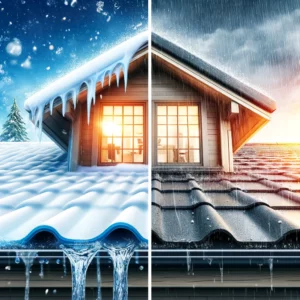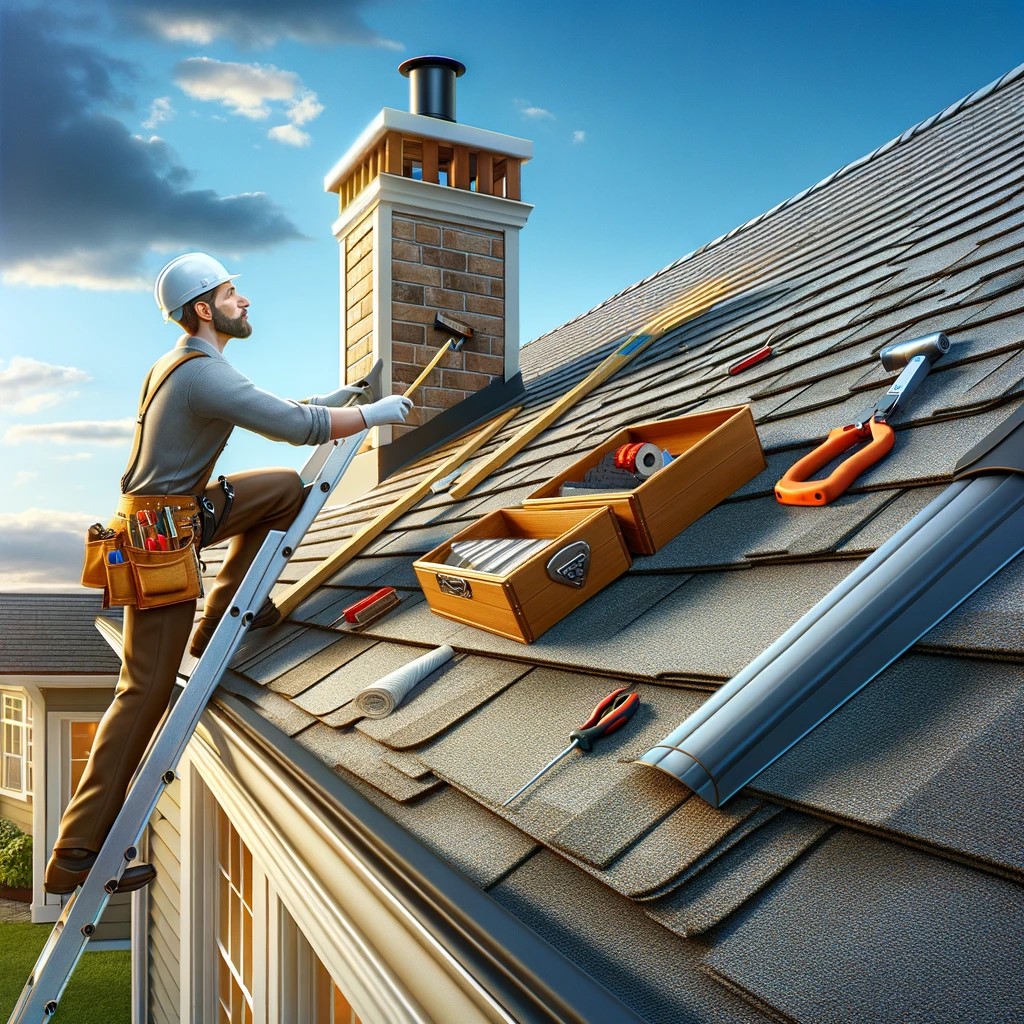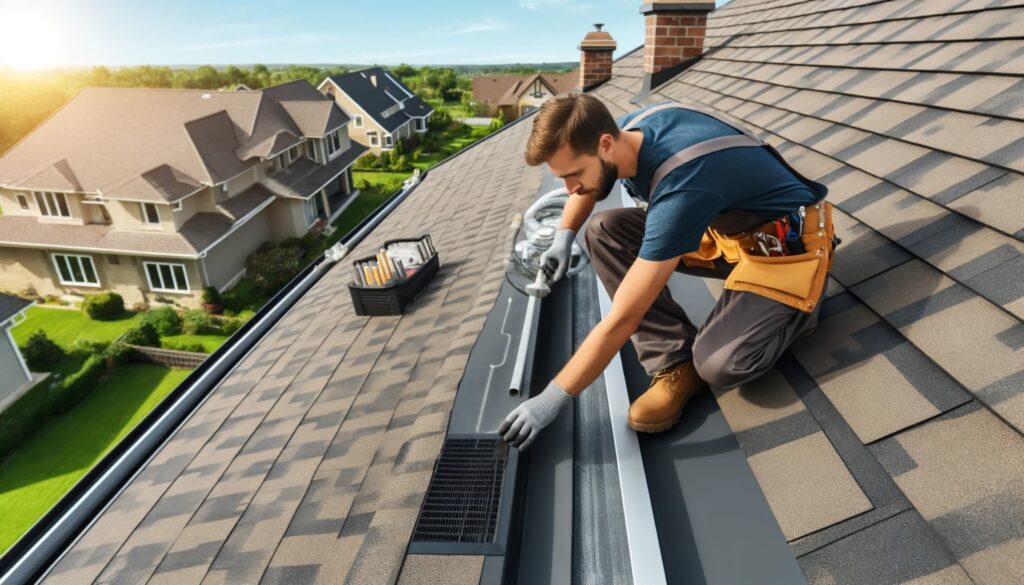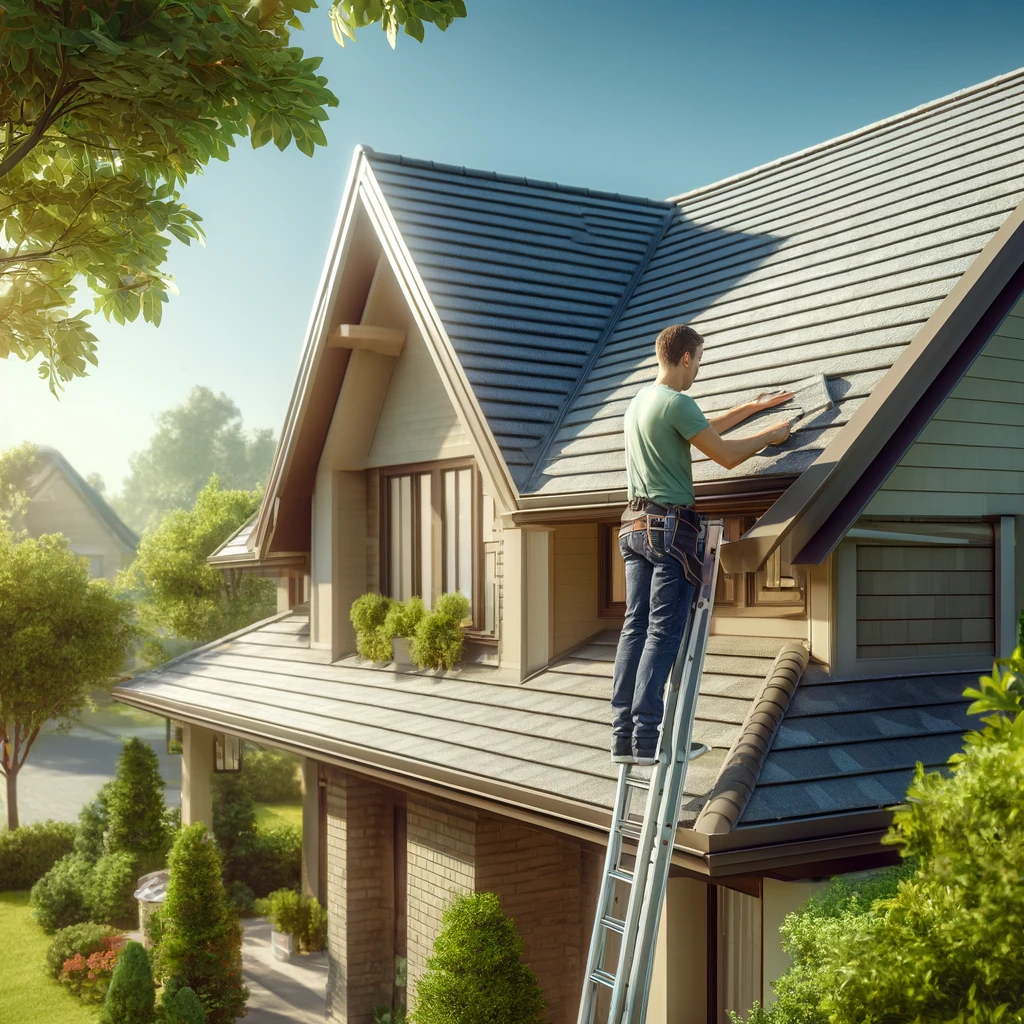Weatherproofing Tips for roofs: Why Weatherproof Your Roof?
An effectively working roof is your first defense against the elements that include hail, snow, rain, sunlight and wind. It does more than just keep rain and snow out: a well-weatherproofed roof can do wonders for your home comfort, energy efficiency, and most importantly its lifespan.Major More on Roof Weatherproofing
Though some of it might seem a little more obvious, like all costs in owning a property the basic roof repairs and maintenance are necessary as well; weatherproofing goes deeper than that. This consists of a whole system for protecting your roof against all the different forces it is confronted with. This includes:
Insulation in your roof: This is another great way to help control the natural and moving heat within your home as insulation acts as a barrier to heat flow, helping keep your warm air inside during winter months and preventing the rising of hot air from beneath you roofing source. Good insulation will see huge energy bill savings and a more wearable home.
Roof ventilation: Ventilation is key to keeping proper moisture levels and a good roof system. It assists in regulating temperature fluctuations making sure that the insulation performs perfectly.
One time for leaks and drafts: Air leakages and also drafts could affect how well insulation functions as well as raise energy intake. But sealing these gaps can save money and make a home more comfortably.
Roof Vapor Barrier: A vapor barrier is the tape squares that stop moisture from entering the roofing system to protect the roof structure from mold, rot and overall decay. This barrier is needed to elongate the life of your roof and a moisture-free, fresh and clean home environment.
Roof Moisture Barrier: Properly weatherproofing your new roof will give you not only a great-looking finished product but also boost the overall performance and value of your home.
For essential information about roofing, Don’t Miss Our Ultimate Guide: What Every Homeowner Should Know About Roofing: A Comprehensive and Essential Guide 2024
The Heart Of Weatherproofing |Knowledge On Roof Insulation
In view of the above, it comes roof insulation in particular look choleric role, because a well for example plays insulated pitched roof not only in our health but also for an energy-efficient and beautiful home-life and how? It also is a barrier to heat flow, helping stop your warm air in the winter and keeping hot outdoor psychological science from infiltrating in the summer. This equates to hundreds of dollars in reduced heating and cooling costs, as well as a more comfortable living environment.
Roof Insulation Materials
There are countless insulation materials out there, each with their own qualities and benefits. Some of the most popular types include:
Fiberglass insulation: This type is one of the most common types and for good reason as it’s cheap and works well. Available in batts, rolls or blown-in form – applicable across several roof types and applications. The R-value hardly has a fiberglass insulation competitor that can offer equally effective thermal resistance.
Cellulose insulation: Cellulose insulation is made from recycled paper and eliminates environmental hazards. It is regularly sprayed into existing cavities for a uniform and secure positioning. It also has a respectable R-value, and is good at sound absorption.
Finding a Good Insulation Material
The choice of insulation materials you should go with for your roofing material is influenced by; where you reside, the funds and exactly what elements in case works better with your roof. R-value: Thermal resistance or the R-value of an insulation is another factor to be considered while looking for insulation material. In colder climates, the higher R-values increase insulation.
So, maybe if you prefer some more specific information to get a general idea of each common insulation material type before deciding what is best for you, this table can help:
|
Insulation Material |
R-Value (per inch) | Pros | Cons |
| Fiberglass | 2.9 – 3.8 | Affordable, versatile, good thermal resistance | Can be itchy, may settle over time, not as moisture-resistant as other options |
| Cellulose | 3.2 – 3.7 | Sustainable, eco-friendly, good sound absorption | Can be messy to install, may attract pests |
| Foam board | 4.0 – 6.5 | High thermal resistance, good moisture resistance | More expensive than other options, less versatile for retrofitting |
| Spray foam | 3.5 – 6.5 | Excellent air sealing, high thermal resistance, good moisture resistance | More expensive than other options, can be messy to install, requires professional application |
Keep in mind, selecting the most appropriate insulation material is very important to optimizing energy and comfort efficiency of your roof. Consulting with an expert can guide you to the right solution for your distinct requirements
How to Insulate Your Roof Properly Step by Step
Hopefully, after you have got a grip on why roof insulation is important and the materials that exist, here are some practical tips to help you install them effectively. Installing insulation correctly is essential to getting the full benefits of home insulation: ensuring that it works at peak efficiency, and provides long-lasting protection for your house.
Roof Insulation Safety Measures
Tip: Safety First Before tackling any insulation project, always remember about safety themselves. Some important safety precautions that should be considered:
Use a heavy-duty ladder: Make sure your ladder is in the correct location and locked before attempting to climb onto your roof.
Use the Proper Safety Equipment: With every home improvement job that involves dust or irritants, you should be using gloves to protect your hands from whatever you find in there and also a respirator mask to avoid inhaling insulation or any of the materials involved as well as safety goggles.
Work in a well-ventilated environment: Open windows and doors to ensure proper airflow, prevent overheating (especially during summer months).
How to Install Roof Insulation
How to Install Insulation Replace Your Roof Retrofitting: Add the insulation layer from above or below the roof deck on top of…
Roof space preparation: Remove any debris, old insulation or obstructions that may get in the way with fitting in new materials
Measure and cut insulation: Cut insulation batts with a knife or scissors.
Install insulation: Place the insulation carefully in the proper locations (making sure there are no gaps), and make certain it is not compressed.
Seal gaps: You can also caulk, sealant or tape to any gaps around crawlspace vents, piping and/or other penetrations in the roof.
Inspection and Touch Ups: Finally, inspect your work to ensure all areas have been properly insulated and sealed.
Different Types of Roof Insulation
Regardless of insulation type, different roofing materials necessitate different approaches to reroofing. Here’s a brief overview:
Pointed roofs: In pointed roof insulation is mostly placed in rafters leaving an empty space below the material.
Flat Roofs: Insulation is Installed on onto roof bed directly or in layers between the roofing material and the roof deck.
Metal roofs: Metal roofs are very durable but may transfer heat. Open day light, they still often get reflective insulation under the roofing panels.
Keep in mind, an insulation is only effective if you do have a continuous barrier (even a tiny 2% gap reduces the effectiveness of your insulation!). Don’t rush things, be very detailed and when necessary, do not hesitate to consult professional help if you are confused with the steps.
Insulation acts as a critical barrier to heat transfer, but so is ventilation of the roof needed for long-term and energy-efficient life of the roof. Proper ventilation contributes to your roof and insulation performance as it helps circulating fresh air from outside, avoiding moisture build-up in attic area that can affect temperature or damage the construction of your roofing.
Why Roof Ventilation Matters
The importance of Ventilation & How it can affect your roof
Controlling condensation: Condensation is produced when humid, warm air rises to meet a cold roof surface. Left unattended, the moisture will eventually create mold growth, rot your wood and lead up even to structural damage. This is prevented with proper ventilation to get the extra moisture out.
Roof temperature control: In hot climates, ventilation helps to get rid of temperatures that accumulate below the roof — so you can avoid driving up your home’s A/C bill. In colder climates, ventilation can help prevent ice dams from building up on the roof and leaking into your home.
Improved insulation performance: Proper ventilation to work with insulation for a well-rounded system. Insulation without proper ventilation can actually hold that moisture back, reducing the efficiency of insulation and even eventually leading to problems such as mold or rot.
Roof Ventilation Techniques
Here are a few ventilation methods that you can implement to keep the airflow in your roof And this should be done, and there is no other way. Some of the widely used methods are:
Ridge vents: Roofs with low degree, has ridge vents through which hot air can flow out.
Soffit vents: Situated under the eaves, soffit vents act as an intake to bring in cool air, creating a draft-like process which pulls warmer air up and out of the ridge vent.
Gable vents: Gable vents are mounted in the gables at each end of the roof and offer air circulation as well.
Power Vents: These are electric fans that can also be mounted on the roof to help remove air more efficiently.
Insulation Versus Ventilation
Optimizing performance: The perfect combination when it comes to maintaining the right balance between heat insulation, and ventilation Too much insulation on a roof can also cause moisture issues in case there is poor ventilation. On the other hand you can have too much vent ventilation with not enough insulation to make it work efficiently.
By accounting for your locale’s unique weather and a few principles of good building science, you can design an arrangement that is perfectly insulated without insulation so strong that it causes moisture to build up inside the wood or otherwise enables dangerous wetness.
Roofing System Energy Efficiency: Fixing Leaks And Drafts
The presence of leaks or drafts-even in a well-insulated and vented roof-can greatly reduce the level to which you´ve weatherproofed. These openings create a way for your heated or cooled air to leak out into the outside environment, which means you use more energy and live in less comfortable home. Stopping these leaks is a critical part of making your roof sealing as energy efficient and effective as possible.
How to Distinguish an Air Leak in Your Roof
Air leaks in many places, and here are some of the common areas to be expected.
Windows and doors: Inspect the seals around window sand doors for cracks or gaps.
Electrical Outlets and Switch Plates: These are details that easily get overlooked, but they can be a serious source of air leakage.
Attic hatches and access panels: Properly sealed with weather-stripping
Pipes and vents: Examine the areas where pipes and vents come through the roof for signs of gaps or poor connections.
Ways to Seal Air Leaks that Work
Identified below are some of the proven methods used to seal air leaks;
Caulking: Caulk is used in and around windows, doors and penetrations — also known as openings created by electric repairs or cable exterior walls.
Weatherstripping: Use weatherstripping to seal leaks around moving elements such as doors and windows.
Insulating electrical outlets and switch plates: Install foam gasket insulators or weatherproof covers over both exterior and interior outlets to add insulation around the outlet itself.
Air sealing the Attic: Hatch and Access Panels- make sure to seal them using weatherstripping and insulating.
Filling gaps around pipes and vents: Caulk or sealant can be applied to fill any voids around plumbing pipes and ventilation shafts that pass through the roof.
Why Airtightness Is Essential to Energy Savings
Air sealing is more than just keeping out the drafts: it adds up to great energy savings! There you find that when less air can bleed out of a home, the heating and cooling systems will need to run less often to maintain indoor temperatures using less energy so costing homeowners considerably-to-much-less money.
Sealing the roof properly along with adequate insulation and ventilation will help to improve overall comfort as well as energy efficiency of a home. A straightforward but powerful step toward greener future and living sustainably.
Save Time and Money with Roof Weatherproofing Treatment Maintenance!
A good weatherproofing roof will also save money and improve your comfort, so it is a real long-term investment in the well-being of your home. But unfortunately, if you want to enjoy cooking from it for years to come, just like any interior of your home (actual or virtual), then it also needs regular repairs. By taking the time to develop a proactive maintenance plan, you can also maximize the lifespan of your roof weatherproofing and minimize large repair bills later on.
Tips on Protecting Your Roof From the Elements this Season
Make sure it is all year and keep the roof weather sealed. Some seasonal maintenance tips to remember are;
Summer:
- Check your roof for damage from the sun and summer heat.
- Adequate venting to avoid trapping heat under the roof and minimizing your insulation.
- Clean your gutter and downspouts to void of clogs that can lead to water damage.
Winter:
- Inspect insulation for any gaps or other damage that has occurred over time.
- In colder climates, you should add more insulation layers to obtain higher thermal resistance.
- Examine For Ice Dams, that can be conducive to the roof edge and result in leaks.

Relatively Inexpensive Solutions for Upgrading Your Roof Weatherproofing
Although it is important to maintain specific weatherproofing, certain upgrades may be necessary to improve energy efficiency or address other needs. Tips to Help you Weatherproof Your Roof on a Budget
Air Leak Sealing: Not only air leaks consume big energy However, an easy and cost-efficient solution is to simply caulk small cracks, install weather stripping over older entry doors or apply foam gasket insulators.
The top take suggestions of installation company Even more measures that setup experts recommend, but still helpful: Econnergy Adding insulation – If your existing cambridge or waterloo is it divides recoating in icynene knowledge as a rule and thornhill barrier are not sufficient or have been damaged.
Other possibilities include installing, reflective insulation: Reflective insulation is an option that can help reflect heat during the hot summer months. This is of course most advantageous if you have a metal roof.
Weatherproofing Grants And Incentives From The Government
Many government programs provide financial help with roof weatherproofing as a home energy efficiency upgrade regionally. Typically, these programs offer a rebate or grant for homeowners to install your insulation, air-sealing and/or ventilation systems. Look into programs in your area to determine if you are eligible for financial aid to enhance the weatherproofing of your roof.
Roof Weatherproofing is an Investment for the Long Term
One home upgrade that will not only protect your building but also save you money in the future is roof weatherproofing. A well-insulated and ventilated roof will save you a lot on energy bills, make living conditions more comfortable and also increase the lifespan of your roof structure.
By staying on top of maintenance and improvements when needed, you can help keep your home in good shape — protecting it from the elements; making for a more comfortable living environment for yourself and guests; and saving money on energy costs well into the future.
Read More How to Weatherproof Your Roof
At this point, you now know the importance of having a weatherproofed roof as well as how to go about creating one with some good protection and energy efficient. Now it’s time for actionable steps… Let’s apply this information in a practical way!
Determine What Type of Roof weatherproofing You Will Need
It is recommended to evaluate the state of your roof’s weatherproofing before starting work on any project.
Check for leaks: Look for stains on the ceiling or walls, peeling paint, or warped wood.
Assess insulation: Establish if your existing insulation is up to standard and in a healthy state.
Check ventilation: Look for obstructed vents or restricted airflow
Find Air Leaks: Check for air leaks where energy may be escaping around windows, doors, outlets and penetrations.
What You Will Need For Roof Weatherproofing
After you have your roof assessed, it is time to plan out your project.
Use proper materials: Insulation material, sealants and weatherstripping should be chosen that ideally use for the climate, roof type or based on your budget.
Create a Budget: Include the costs of materials, labor and any applicable permits or inspections.
Get expert advice: A roofing contractor or energy auditor can help you choose the right materials, plan your project correctly and oversee installation.
The Advantages of a Weatherproofed Roof
If you spend the time to weatherproof your roof right, it will pay off:
Energy Efficiency: Decreased energy usage resulting in lower heating and cooling bills.
Improved comfort: Your home will be more comfortable with no drafts or wide temperature fluctuations,
Durability: Preserves against water buildup, mold and stress resistance to your roof adding years to the life of your roof.
Higher home value: A well-maintained and weatherproofed roof increases the total value of your property.
By taking steps to winterize your roof now, you are investing in the comfort of your home this winter, as well as its overall energy efficiency and value years down the road. It is a move toward building a more sustainable and livable future.
Weatherproofing Your Roof: Frequently Asked Questions
What are some cost-effective ways of insulating a home roof yourself?
Bulk Insulation. You can use bulk insulation materials, like glass wool or polyester batts (usually affordable alternatives that you can put in between the roof joists yourself. Reflective foil laminates can also be installed beneath their roofing products to send heat upwards; they are often a more budget-friendly choice.
Suggest some ways to insulate a room better so that its cooler during summer?
Reflective insulation: Reflective insulation reflects radiant heat. This kind of insulation is installed within the attic which leads to a greater possibility for energy saving as it can stop additional heat building up in your home during summers. Lastly, open those walls and sealed them with silicone or use expanding foam on all leaks from the roof where warm air could gain access.
How to Insulate and Fix a Warped Ceiling?
For example, if you are installing insulation batts or rolls from the interior, it must be carefully fit between ceiling joists and not compressed as doing so can weaken its insulating ability. A blow-in insulation method is worth looking at, which for some situations can be more effective in spaces that are difficult to access.



